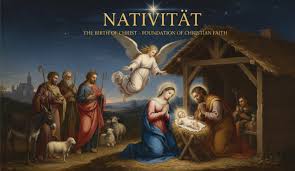1. Understanding the Meaning of Nativität
The word “Nativität” originates from the Latin term nativitas, meaning “birth.” It is most commonly used in German-speaking regions to describe the concept of birth or nativity, particularly in religious, artistic, and cultural contexts. The term often evokes imagery related to the birth of Jesus Christ, symbolizing hope, renewal, and divine presence.
Beyond its religious roots, “Nativität” also represents the idea of beginnings—new life, creation, and origin. Whether used in theology, art, or everyday speech, it carries a sense of sacredness associated with the miracle of coming into existence.
2. The Religious Roots of Nativität
In Christianity, Nativität refers to the Nativity of Jesus, one of the most celebrated events in the Christian calendar. This moment signifies God’s incarnation as a human being, bringing salvation and peace to the world. The story is depicted in countless biblical narratives and Christmas traditions.
Churches across Europe celebrate this sacred event through songs, prayers, and visual depictions of the manger scene. The Nativität of Christ serves as a reminder of humility, divine love, and faith—themes that remain central to Christian teachings.
3. Nativität in Art and Iconography
Throughout history, artists have portrayed the Nativität in paintings, sculptures, and stained-glass windows. Renaissance masters like Botticelli and Da Vinci captured the moment of divine birth with elegance and emotional depth. Their works emphasize the union of human tenderness and divine mystery.
These artistic depictions not only preserve the story but also reflect cultural interpretations of faith. Each region or era adds its own details—local landscapes, clothing styles, or symbols—making every portrayal of the Nativität unique and historically valuable.
4. Cultural Significance Beyond Religion
Although rooted in Christian belief, Nativität extends into cultural traditions across the world. It embodies the universal joy of birth, family, and renewal. Many cultures celebrate their own versions of nativity scenes, emphasizing the miracle of life rather than specific religious figures.
From Christmas markets in Germany to community displays in Latin America, the Nativität connects people through shared celebration and artistry. It encourages values like generosity, gratitude, and unity during festive seasons.
5. The Symbolism of Light and Renewal
In many Nativität celebrations, light plays a key symbolic role. Candles, lanterns, and stars represent divine guidance and the triumph of hope over darkness. The star above Bethlehem, for example, is often seen as a beacon leading humanity toward spiritual enlightenment.
This symbolism extends beyond religion—light during Nativität symbolizes rebirth, renewal, and the power of positivity. It’s a reminder that every ending leads to a new beginning, mirroring the cycles of life, faith, and nature.
6. Nativität in Modern Celebrations
Today, the Nativität is celebrated not only in churches but also in homes, schools, and public spaces. Nativity plays, festive concerts, and art exhibitions bring the story to life for new generations. These events foster community connection and cultural appreciation.
Modern celebrations often blend traditional faith elements with contemporary creativity. From digital light shows to multicultural nativity scenes, the Nativität continues to evolve, reflecting a world where tradition and innovation coexist harmoniously.
7. Linguistic and Etymological Insights
The term “Nativität” is linguistically related to words like natal, nativity, and nascimento across different languages. This linguistic link highlights a shared cultural emphasis on birth and new life throughout history.
In academic and linguistic studies, “Nativität” also reflects how ancient languages influence modern vocabulary. Its evolution from Latin to German illustrates how meanings adapt over centuries while preserving their original essence.
8. Nativität in Literature and Philosophy
Writers and philosophers have long been fascinated by the theme of Nativität. It appears as a metaphor for creation, self-discovery, and transformation in poetry and prose. Philosophically, it invites reflection on existence—the origin of life and the renewal of the human spirit.
In literature, authors use the idea of Nativität to express hope and change. Whether describing the literal birth of a child or the metaphorical birth of an idea, the concept resonates deeply with readers across generations.
9. Global Interpretations of the Nativität Theme
Different cultures interpret Nativität through their own spiritual and artistic lenses. In Eastern traditions, the birth of enlightenment mirrors the Christian concept of divine birth. In African and Indigenous cultures, birth rituals celebrate the connection between humanity and nature.
This universality makes Nativität more than just a religious celebration—it’s a human experience. Across continents, people recognize the beauty of life’s beginnings, using art, song, and storytelling to honor the sacred act of creation.
10. The Timeless Message of Nativität
At its core, Nativität carries a message of love, compassion, and renewal. It reminds people to embrace new beginnings with faith and optimism, no matter their background or beliefs. The story of birth—divine or human—symbolizes the potential for hope in every generation.
In an ever-changing world, the concept of Nativität endures as a symbol of unity and rebirth. Whether celebrated in a church, home, or heart, it continues to inspire kindness, reflection, and gratitude for the miracle of life.


